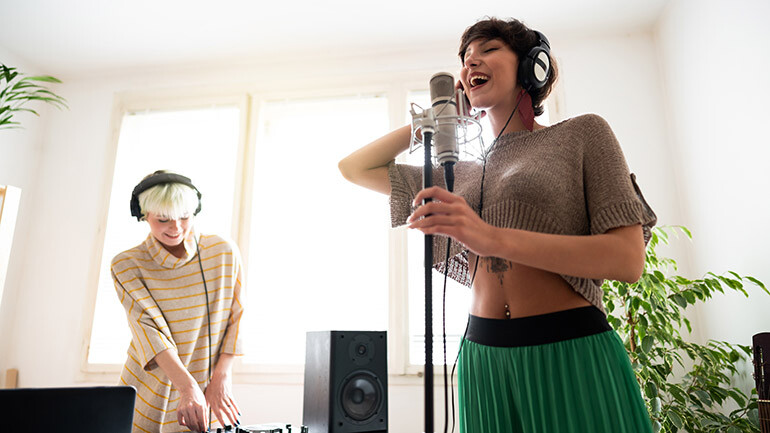Stand Points
Few studio items see more action than your microphone stands, therefore it pays to invest in a few quality models. Here we consider what to look for, including different sized stands, the importance of a heavy base and counterweight, adjustability, and more

Spending money on studio equipment is more fun when it’s something sexy like a new recorder or effects unit, but when it comes to hardware essentials, we’re more likely to drag our feet. Take microphone stands, for instance—a couple of metal poles held together with a few tighteners and a holder on the end for your mic. What’s the big deal? Which is why many of us still make do with the same old creaky stands that have been in service for eons.
In reality, your stands are at least as important as any studio essential. If you want to keep your pricey condenser mic from suddenly falling six feet to its demise or ensure that a boom arm stays in a fixed position, then a well-made mic stand may be in your future.
First-rate base. Probably the most important feature of any good mic stand is stability, which is why the weight and footprint of the base is a good place to start. While a lighter handheld mic such as a Shure SM57 or 58 is less likely to cause problems, a large-diaphragm condenser, ribbon, or any mic with a little heft requires a solid foundation to remain upright (this is especially true when fully extending the boom portion of the stand). For this reason, a round, heavy cast-metal base, along with a fully adjustable, solid boom counterweight, is generally preferable for supporting larger mics that could easily topple a lightweight stage stand; additionally, stands with round bases are easier to sneak into smaller spaces than those with wider, fold-out tripod bases. Of course, portability is also an issue, therefore if you’re a gigging musician you may find it easier to have a couple of heavier stands that stay in the studio, while saving the others for live situations.
Different sizes. There are times when a smaller stand is preferable, such as when recording an amplifier or bass drum. Mini-booms are great for these situations, as they allow you to mic up floor-level sources that are often difficult to reach using a standard boom arm. Or if you want to eliminate the base altogether, you might consider a clamp-on boom arm, which can attach to a mic stand, drum holder or a table for suspending a mic when space is particularly tight.
On the other end of the spectrum are pro-studio sized stands that include lengthy telescoping boom arms that can be extended high into the air for overhead or vocal recording, as well as extra-large base with locking casters for easy movement. Though a bit more of an investment, these units are unusually rugged and have high-quality locking hardware that’s likely to outlast garden-variety stands.
Mic mates. While we’re on the subject, let’s not forget about the various odds and ends that can help keep your mic positioning secure. For starters, be sure to use well-made mic clips atop your stands—rubber is preferable to plastic (less chance of breakage), and you’ll want a holder that can snuggly accommodate most basic mics. Some microphone makers have holders that are specific to a particular model, in which case you’ll always want to use the clip that’s meant for your type of mic, rather than any old clip that almost fits (but not quite).
Another essential is the pop filter, a square-shaped screen that attaches to the top portion of the mic stand and is placed in front of the mic’s diaphragm to prevent “p-pops” and other plosive sounds while recording vocals. Pop filters are made of either foam or metal, the latter being a little pricier though easier to clean than its foam counterpart. While pop filters are generally more effective for studio use, you can still pick up foam windscreens that fit directly over the mic if you prefer that old-school vibe.






Community
Connect with BMI & Professional Songwriters